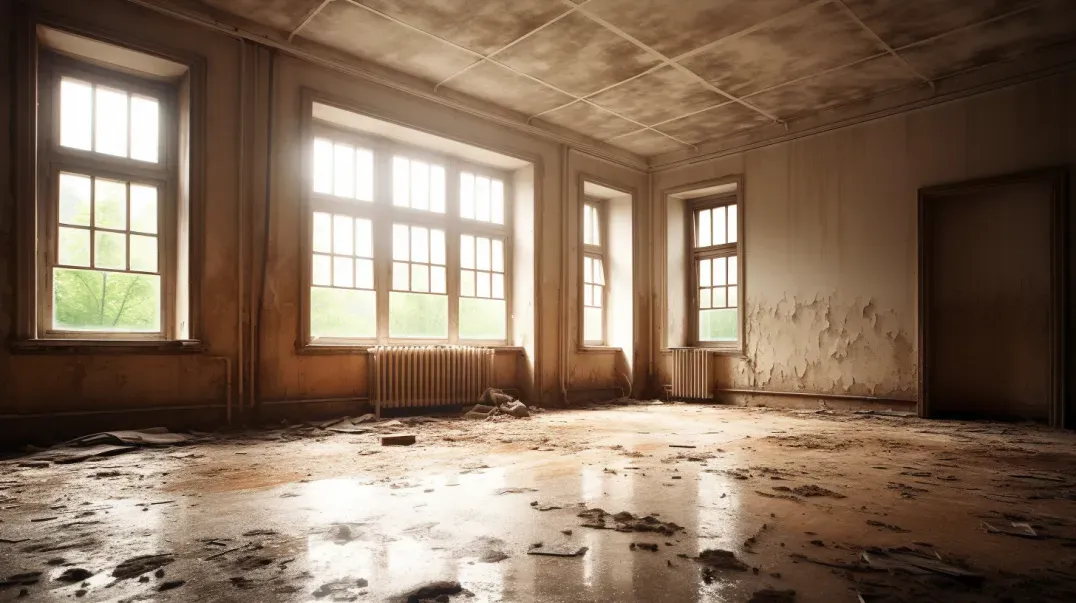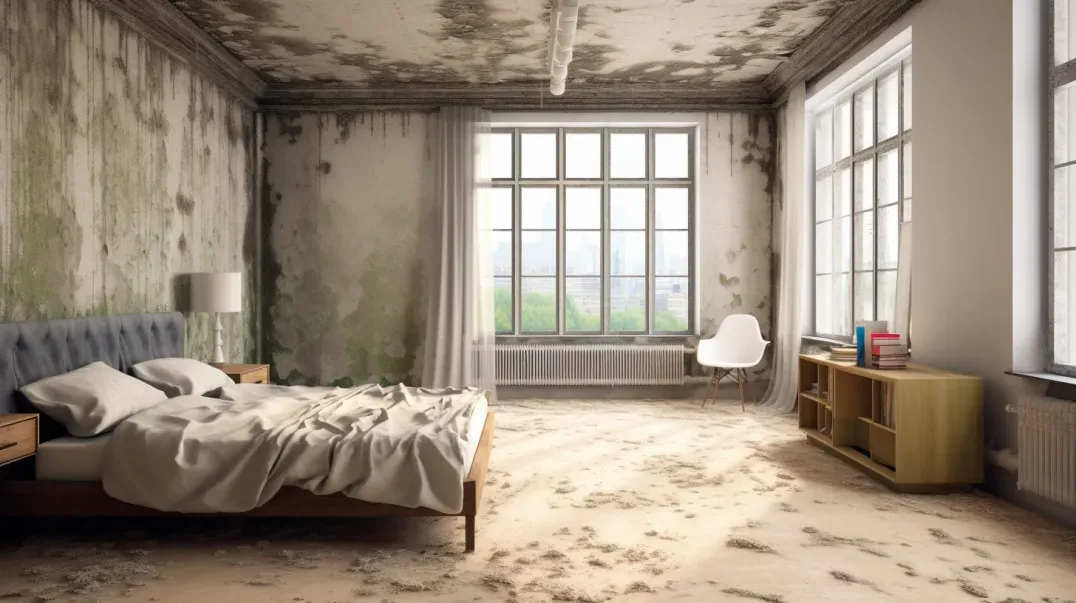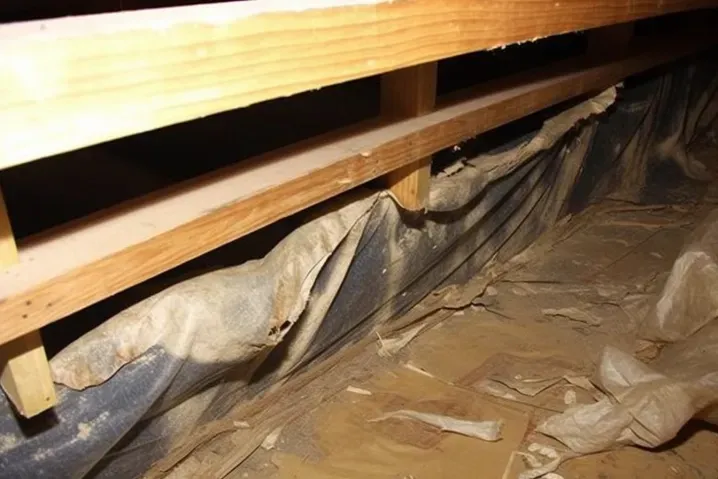Mold Remediation Planning
Mold remediation is a critical process for homeowners and property managers, going beyond simple mold removal to address the root cause and prevent future growth. This blog aims to provide a thorough introduction to what mold remediation entails and emphasize the importance of a structured, methodical approach for effective and lasting mold removal.
Mold remediation is not just about cleaning visible mold; it's a comprehensive strategy that involves assessment, containment, removal, cleaning, and prevention measures. Understanding the steps and principles of effective mold remediation is crucial, as improper handling can lead to further spread and long-term issues.
The importance of a structured plan in mold remediation cannot be overstated. A well-defined plan ensures that all aspects of mold growth, including hidden and potential sources, are identified and addressed. This approach not only removes existing mold but also implements preventive measures to inhibit future mold growth, thereby safeguarding the property and the health of its occupants.
In this blog, we will delve into the various stages of mold remediation, from initial assessment to final restoration, highlighting key techniques and considerations at each step. We will also discuss why a structured remediation plan is essential for effectively tackling mold problems and maintaining a healthy indoor environment.
Join us as we explore the intricacies of mold remediation, providing insights and guidance for those facing mold challenges in their properties. Whether you are dealing with a current mold issue or seeking to prevent future problems, this blog will equip you with the knowledge and strategies needed for successful mold management.
Understanding Mold and Its Impacts
Mold is a common concern in both residential and commercial properties, not only affecting the integrity of buildings but also posing various health risks. This section of the blog aims to provide a comprehensive understanding of what mold is, including its types and the impacts it has on health and the environment. Additionally, we will explore the critical need for mold remediation to safeguard both health and property.
What is Mold?
Mold is a type of fungus that exists in many environments, both indoors and outdoors. It plays a vital role in nature by breaking down organic matter, but it can become problematic when it grows unchecked in indoor environments. Here’s some basic information about mold:
- Characteristics: Mold reproduces through tiny spores that are capable of surviving in harsh conditions that do not support normal mold growth.
- Types of Mold: There are thousands of species of mold, but some of the most common found in homes include Aspergillus, Penicillium, and Stachybotrys chartarum (often referred to as black mold).
- Health and Environmental Impacts: Exposure to mold can lead to various health issues, especially in individuals with allergies, asthma, or compromised immune systems. Symptoms can range from nasal stuffiness, eye irritation, wheezing, or skin irritation to more severe reactions like shortness of breath and lung infections. Mold can also cause structural damage to buildings, leading to costly repairs and property devaluation.
The Need for Mold Remediation
Mold remediation is an essential process for addressing mold infestations in buildings, crucial for both health and structural integrity:
- Health Reasons: Mold spores can contribute to indoor air pollution and cause health problems. Remediation is necessary to create a safe and healthy living or working environment.
- Property Integrity: Mold can weaken the structural elements of a building, such as wood and drywall. Remediation helps in preserving the integrity and value of the property.
- Prevention of Further Damage: Proper mold remediation involves identifying the source of moisture and addressing it, which is crucial in preventing future mold growth.
Understanding mold and the necessity of its remediation is vital for property owners and occupants. Effective mold management not only contributes to a healthier indoor environment but also helps in maintaining the structural integrity and value of the property.
Assessing the Mold Situation
Properly assessing the extent of a mold infestation is a critical step in effectively managing and resolving mold issues in homes and buildings. This section of the blog provides guidance on how to determine the severity and extent of mold growth, as well as advice on when it is necessary to call in professional help.
Identifying the Extent of Mold Infestation
Understanding the scale of a mold problem is essential for planning the appropriate course of action. Here are some guidelines to help assess the severity and extent of mold growth:
- Visual Inspection: Start with a thorough visual inspection of the property. Look for visible signs of mold, which can appear as fuzzy or slimy patches in various colors, including black, green, or white.
- Note the Area Size: Measure the area affected by mold. Small areas might be manageable through DIY methods, but larger areas often require professional intervention.
- Check for Water Sources: Identify any sources of moisture, as these are likely contributors to the mold problem. This includes leaks, condensation, or high humidity areas.
- Smell Test: Mold often produces a musty odor. If you notice such a smell, especially in areas where mold isn’t visible, it could indicate hidden mold growth.
- Health Symptoms: Pay attention to any health symptoms among occupants that might be related to mold exposure, such as allergies or respiratory issues.
When to Call a Professional
While some minor mold issues can be addressed with DIY methods, there are situations where professional assessment and intervention are necessary:
- Large Infestations: If the mold covers a large area (typically over 10 square feet), it’s advisable to seek professional help.
- Hidden Mold: If you suspect mold is growing in hidden areas like inside walls, under floors, or in HVAC systems, a professional can conduct a thorough inspection using specialized tools.
- Health Risks: If there are health concerns among occupants, especially those with respiratory issues or allergies, professional remediation is recommended to ensure safe and thorough removal.
- Recurring Mold: If mold keeps returning despite efforts to clean and remove it, professionals can help identify and address the underlying moisture problem.
Assessing the mold situation accurately is crucial for effective remediation. By understanding the extent of the infestation and recognizing when professional assistance is needed, homeowners and property managers can take informed steps to not only remove the mold but also prevent its recurrence. This approach ensures the maintenance of a healthy living environment and the preservation of property integrity.
Developing a Mold Remediation Plan
Creating an effective mold remediation plan is essential for successfully addressing mold issues in any property. This plan not only guides the remediation process but also ensures that the goals and objectives of the remediation are clearly defined and met. This section of the blog will discuss how to set clear goals for mold remediation and choose the right remediation strategy based on the assessment of the mold situation.
Setting Clear Goals and Objectives
The first step in developing a mold remediation plan is to define the goals and objectives of the remediation process. These goals typically include:
- Health Safety: Ensuring the health and safety of the occupants by removing harmful mold spores and contaminated materials from the living environment.
- Property Restoration: Restoring the affected areas of the property to their original condition, preventing future mold growth, and maintaining structural integrity.
- Preventing Recurrence: Identifying and addressing the underlying causes of mold growth, such as moisture issues, to prevent future mold problems.
- Compliance with Regulations: Adhering to local health and safety regulations and guidelines during the remediation process.
Choosing the Right Remediation Strategy
Selecting an appropriate remediation strategy is crucial and depends on the extent and severity of the mold infestation. Various strategies can be considered based on the mold assessment:
- DIY Remediation: For small, contained areas (less than 10 square feet), DIY remediation may be sufficient. This includes cleaning the mold with appropriate cleaning agents and fixing the source of moisture.
- Professional Remediation: Larger infestations, high-risk areas (like HVAC systems), or situations involving health risks to occupants require professional remediation. Professionals have the necessary equipment, expertise, and safety measures to handle extensive mold issues.
- Containment and Removal: In cases of significant mold growth, containment procedures are necessary to prevent the spread of mold spores during removal. This might involve using physical barriers and negative air pressure.
- Moisture Control Measures: Alongside mold removal, addressing the source of moisture is essential. This could involve repairing leaks, improving ventilation, or installing dehumidifiers.
Developing a comprehensive mold remediation plan tailored to the specific needs of the property and the severity of the mold issue is key to effectively resolving mold problems and ensuring the long-term health and safety of building occupants.
Safety Considerations in Mold Remediation
Addressing mold issues is not just about removing the mold; it's also about doing it safely. This section of the blog focuses on the crucial safety considerations to keep in mind during mold remediation, including the necessary personal protective equipment (PPE) and the safety protocols that should be followed to ensure a safe remediation process.
Personal Protective Equipment (PPE)
When dealing with mold remediation, protecting oneself from exposure to mold spores and other contaminants is essential. Here is a list of necessary PPE for mold remediation:
- Respirators: N-95 respirator masks or better are recommended to protect against inhaling mold spores.
- Gloves: Long gloves made of a material like rubber, nitrile, or polyurethane are necessary to avoid direct skin contact with mold and cleaning chemicals.
- Goggles: Wear goggles without ventilation holes to protect your eyes from mold spores and other debris.
- Protective Clothing: Disposable coveralls can prevent mold spores from coming into contact with your skin and regular clothing. They should cover both head and feet, especially in cases of severe infestation.
Ensuring Safe Procedures
Following safety protocols during the mold remediation process is crucial to prevent health risks and ensure effective removal. Here are some key safety procedures:
- Containment: Use plastic sheeting and tape to seal off the affected area, preventing the spread of mold spores to other parts of the building.
- Ventilation: Ensure good ventilation in the remediation area. Use fans and open windows, if possible, to circulate fresh air and reduce mold spore concentration.
- Avoiding Cross-Contamination: Be cautious to avoid spreading mold spores to unaffected areas. This includes properly disposing of waste materials and cleaning equipment used in the remediation process.
- Safe Use of Chemicals: Follow instructions carefully when using mold-killing agents or disinfectants. Ensure the area is well-ventilated and that you're wearing appropriate PPE.
- Health Monitoring: Be aware of health symptoms that may arise during remediation, such as respiratory issues or skin irritation. If symptoms occur, seek medical attention and reassess the safety of your remediation approach.
Safety in mold remediation is paramount, not just for the effectiveness of the remediation itself but also for the health and well-being of those involved in the process. By adhering to these safety considerations, including the use of proper PPE and following safe procedures, you can ensure a safer and more effective mold remediation process.
The Mold Remediation Process
Mold remediation is a meticulous process that involves more than just cleaning up visible mold; it's about ensuring the mold is thoroughly removed and prevented from returning. This section of the blog will guide you through the critical steps of the mold remediation process, focusing on containment and isolation to prevent the spread of mold spores, as well as introducing various mold removal techniques.
Containment and Isolation
The first step in the mold remediation process is to contain and isolate the affected area. This is crucial to prevent mold spores from spreading to other parts of the property during the removal process. Here are the steps involved:
- Sealing Off the Area: Use plastic sheeting and duct tape to seal off the affected area, including doorways, vents, and other openings.
- Creating Negative Air Pressure: Utilize air filtration devices, like HEPA-filtered air scrubbers, to create negative air pressure, which helps to contain mold spores within the sealed area.
- Removing Contaminated Materials: Materials heavily infested with mold, such as drywall or insulation, should be carefully removed and disposed of in sealed plastic bags.
- Limiting Access: Only individuals wearing appropriate personal protective equipment (PPE) should have access to the containment area to minimize the risk of cross-contamination.
Mold Removal Techniques
Once the area is securely contained, the next step is the actual removal of the mold. Various techniques can be employed, depending on the severity and type of mold infestation:
- Chemical Methods: This involves using EPA-approved fungicides and moldicides. These chemicals are applied to affected surfaces to kill the mold. It's essential to follow the manufacturer's instructions and safety guidelines when using these products.
- Natural Methods: For those preferring eco-friendly options, natural methods like using vinegar, baking soda, or hydrogen peroxide can be effective for smaller mold problems. These substances can kill mold and are less harsh than chemical alternatives.
- Physical Removal: In some cases, physical scrubbing or sanding may be necessary to remove mold from surfaces. This should be done cautiously to avoid dispersing mold spores into the air.
- Drying and Repairing: After mold removal, it's crucial to thoroughly dry the area and repair or replace damaged materials. This step ensures that the environment is not conducive to mold regrowth.
The mold remediation process is a comprehensive approach to not only remove existing mold but also to prevent its recurrence. By understanding and following these steps, homeowners and property managers can effectively tackle mold issues, ensuring a safe and healthy environment.
FAQs
Contact Lowcountry Crawlspaces Today!
Lowcountry Crawlspaces will do everything we can to ensure your experience with us is excellent.
Request A FREE Estimate
CHECKOUT RECENT POST



Schedule Your FREE Crawl Space Evaluation Today
There Is No Crawl Space Job We Can’t Fix!




